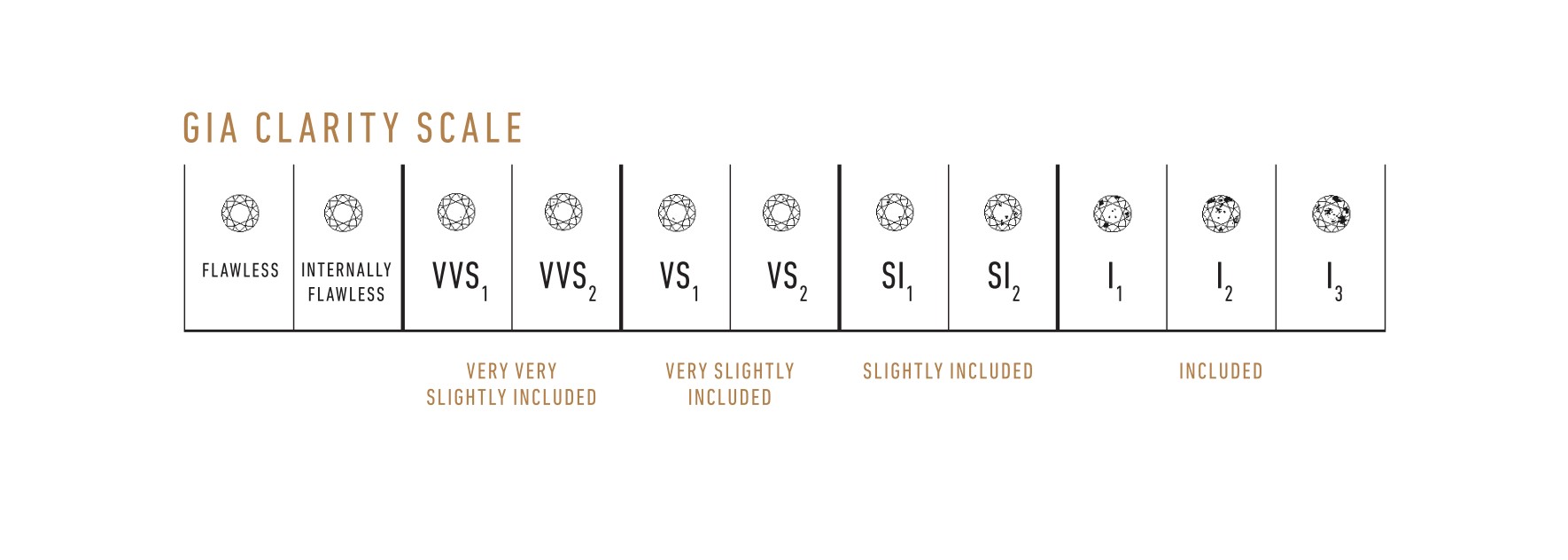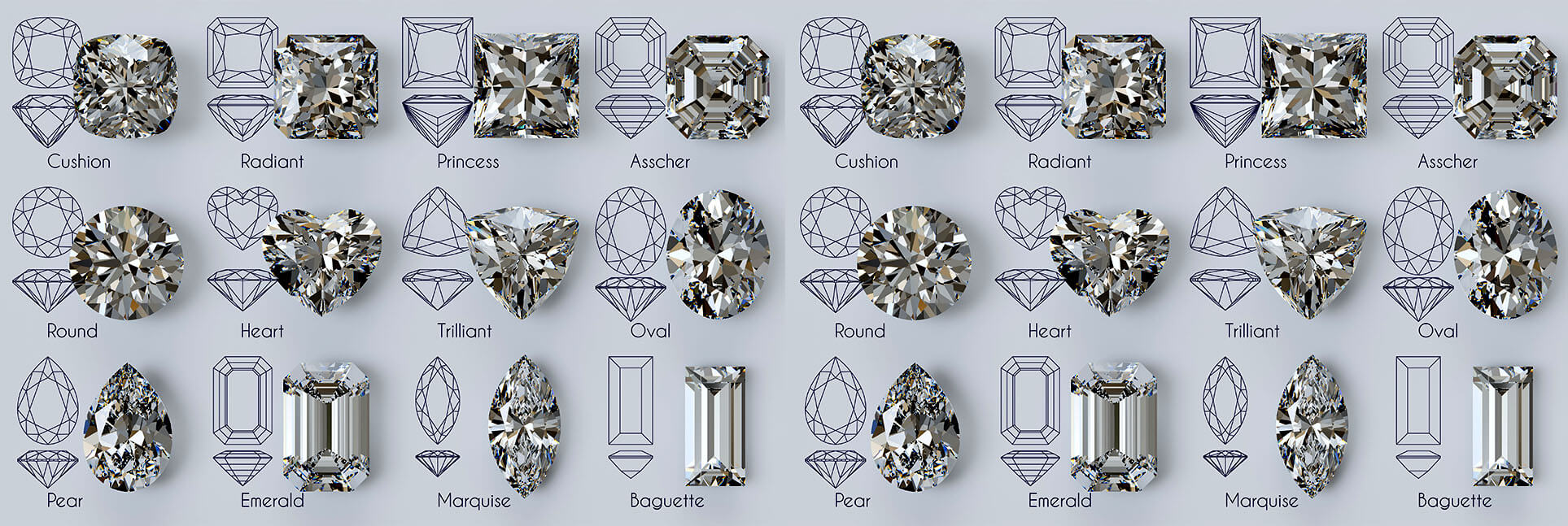Diamond Cut vs Clarity
Is diamond cut more important than clarity?
Bottom Line…
- Please follow this article on is diamond cut important to understand why cut matters and to what degree.
- Please follow these diamond proportions to maximize your chances of buying a true ideal cut loose GIA certified diamond.
- In terms of priority, cut is more important than clarity. However, both should be equally prioritized. One is a natural factor; the other depends on the craftsmanship of the cutter. Follow these guidelines on how to compromise on the 4Cs for better understanding of the issue.
Diamond Cut versus Diamond Clarity : Why are they Important?

 Cut is considered to be the most important of the 4cs where the sparkle and fire (brilliance) of the diamond is concerned. Clarity is also important because it can impact the perceived brilliance of the stone. These two factors combined play a big role in determining the value of a diamond. If possible choose GIA certified diamonds for good investment.
Cut is considered to be the most important of the 4cs where the sparkle and fire (brilliance) of the diamond is concerned. Clarity is also important because it can impact the perceived brilliance of the stone. These two factors combined play a big role in determining the value of a diamond. If possible choose GIA certified diamonds for good investment.
The Implications of Diamond Clarity…
Clarity may be defined as a standard that describes the amount of inclusions and the flawlessness of the diamond. Diamonds are made in the core of the earth under intense pressure and heat. So it is not surprising that they tend to have solids, liquids, and gases trapped in them. Therefore, most diamonds are bound to have imperfections.
Diamonds without imperfections are rare and therefore more expensive. Grading helps to determine the inclusions and blemishes in the stone. You don’t need a flawless diamond as the imperfections are difficult to detect. Clarity is a factor that if understood by diamond buyers can help them save money.
Clarity is important because it will also affect your choices where it pertains the other 4cs. For example, for diamonds that have minimal inclusions such as VS1 and SI1, you’ll be limited to choosing stones that are below 2 carats. Choose a stone above 2 carats and the imperfections will start to show.
A professional grader examines the stone to determine the nature of blemishes and inclusions in it. This is done under 10x magnification. Since there are inclusions that can only be spotted under a magnifying glass, people choose lower that don’t show the imperfections. This way, diamond buyers can get the style of diamond they want, without choosing a flawless piece which is expensive.
Clarity Grades
●Flawless (F): No inclusions and blemishes can be detected by a grader when looking at it at 10x magnification.
●Internally Flawless (IF): No inclusions can be detected under 10x magnification.
●Very Very Slightly Included (VVS): Has inclusions, but it would be difficult for a professional grader to detect under 10x magnification.
●Very Slightly Included (VS): Inclusions are difficult to spot, but can be detected under 10x magnification.
●Slightly Included (SI): Inclusions can be easily spotted under 10x magnification.
●Included (I): Has inclusions that affect the quality of the diamond.
Diamond Cut…
The cut can be said to be a styling or design standard used for grading shaped diamonds. The cut should not be confused with the shape of the diamond. It refers to the characteristics such as proportions, polish, and symmetry of the stone.
These characteristics defined by the design standards are important to quantify since they have an impact on the quality of the stone. The physical characteristics of the stone are considered before choosing a cut.
In its natural form, a diamond from the mines looks rough and unappealing. The external surface is dull and covered by unattractive clumpy and cloudy deposits. A jeweler strives to remove the facets in a way that will bring out the most when it comes to the brilliance of the stone.
A jeweler must carefully consider the shape of the diamond and its symmetry among other physical characteristics. The way the facets inside the stone are arranged determines the amount of light that is going to be reflected back to the viewer. Generally speaking the more facets the more luminous the stone. Round brilliant cut has 58 facets and is the brightest when compared to the other styles.
The polish of the diamond is also important to a jeweler when considering the cut to choose for a rough diamond. The polish describes how neatly and smooth the facets are arranged inside the stone. The proportion and symmetry of the stone also has to be factored in, since it determines how light is reflected inside the diamond.
Types of Cut and Their Implications…
Because a rough diamond comes in many different sizes and characteristics the types of cut vary widely. One of the most common types of cut is round brilliant. The symmetry of this type of cut results in diamonds that are more brilliant than most other shapes. Unfortunately, this cut may make the stone more expensive. A lot of material is wasted in the process of shaping it.
There are other fancier types of cut. The advantage of fancier shapes is that they create a unique style for your stone. The flipside is that too much shaping of the stone can limit its power to disperse light. Fancy styles are more common in bigger stones. Because the bigger it is, the more dispersive power it has.
Clarity Versus Cut…
There are different styles of cut. The type of cut on a stone can affect clarity. Since these grades determine the cost of a diamond, many consumers consider both factors before making a purchase.
If the diamond is not clear, the type of cut may affect its brilliance. This is because the way light is dispersed internally can make blemishes and imperfections more noticeable. For example, an emerald shape on a stone with low clarity is bound to make it dull.
To make the best choice, you need to look at the relationship between these two factors. Here are some of the common types of cut and how relationship affects each:

●Round Brilliant: The round brilliant is one of the most common styles. Two thirds of the diamonds sold have been of round brilliant cut. It has more facets than other styles which boosts its brightness. Its brilliance means that inclusions are much harder to spot even under magnification. However, its popularity may have had an impact on its perceived value.
●Emerald: Emerald diamonds are shaped such that it has edges which create the “hall of mirrors effect”. One advantage of this style is that it can make the stone appear larger. Unfortunately, this cut does not provide the highest level of brilliance. It is recommended that you choose a high clarity diamond such as VS1 to avoid inclusions showing.
●Asshecr: The asscher cut is a step cut style that is similar in design to the emerald cut. The positioning of the facets creates dispersion of light internally. Unfortunately, it is not close to being as brilliant as the round brilliant. You will need to choose a stone with a clarity of SI1 since inclusions may be noticeable at lower grade clarity.
●Cushion: It is referred to as the cushion since it fashioned into either a square or rectangle but with rounded edges. It was developed in the late 19 th century, when the technology at the time could only allow round and the cushion cuts. It remained outdated until the early years of the 21st century. They are currently amongst the top four most popular cuts for engagement rings. For this cut, consider SI1 clarity or higher.
●Marquise: This is a style that resembles the oval shape of a football. The shape of this diamond makes it appear larger. It is considered to be one of the most fashionable styles for a diamond engagement rings since it makes the fingers look longer. The main issues with this style is its symmetry and bow tie inconsistencies. For symmetry the end points need to align exactly. Otherwise, the viewer will feel there is something wrong. Bow tie inconsistencies are black spots or lines that show on the diamond and are common with this type of stone.
●Princess: The princess diamond is considered to be the most popular style for engagement rings. It can either be a square or rectangular shape and it looks like a pyramid when viewed from above. The shape employed in this style results in minimum waste since it is similar in structure to one half of a round diamond. The princess style, therefore, offers more value per carat than other types of cut. While the princess does not have the brilliance of a round brilliant, it has the most sparkle compared to other types of fancy styles.
Clarity vs Cut Considerations…
Before choosing a diamond, you need to understand that there is always a relationship between the 4C’s. A stone may have a high clarity grade, but may have colors that make it look dull. Similarly, some cuts may be fancy but their clarity may make them look cloudy on the inside or magnify imperfections. You therefore need to be clear on what you want based on preferred style or budget. Consider the 4Cs carefully and you will not be disappointed.
Credit:18th Jun 2019
